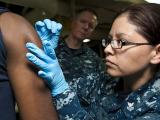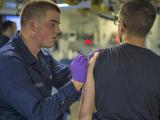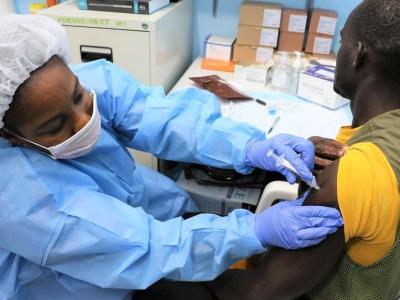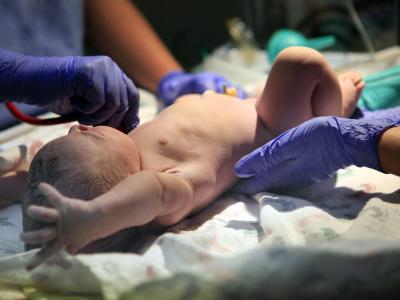Jun 16, 2004 (CIDRAP News) In an effort to shed some light on a potential side effect of smallpox vaccination, researchers are launching a federally funded pilot study of the effects of smallpox vaccines on cardiac cells in mice.
The general aim of the study is to begin investigating why smallpox vaccination appears to trigger myopericarditis (inflammation of the heart muscle and lining) in a tiny fraction of recipients, according to a news release from the North Carolina State University School of Veterinary Medicine.
Among more than 39,000 civilian health workers who received smallpox shots in 2003, there were 16 suspected and 5 probable cases of myopericarditis after vaccination, according to the Centers for Disease Control and Prevention. In addition, 75 cases of myopericarditis occurred among 623,244 military personnel who received smallpox shots between December 2002 and May 10, 2004, according to the Department of Defense.
North Carolina State officials said the National Institutes of Health awarded a 2-year, $500,000 grant for the research. Dr. Barbara Sherry, a professor of virology in the NCSU College of Veterinary Medicine, is conducting the study in collaboration with Dr. David Pickup, a Duke University expert on smallpox vaccines.
In the news release, Sherry said it has been estimated that up to 1 in 2,000 smallpox vaccinees has complained of chest pain, shortness of breath, and related symptoms. But the number of people who had a viral infection of the heart after vaccination without any symptoms could be much higher, she said.
People who have myocarditis can later experience dilated cardiomyopathy, which can cause severe heart failure, Sherry said. However, whether myocarditis associated with smallpox vaccine can lead to this condition is unknown, she said.
The study will focus on the effects of three different poxviruses on cardiac cells in mice, Sherry told CIDRAP News in an e-mail message. Two of the viruses are vaccinia, used in the standard smallpox vaccine, Dryvax, and a weakened form of vaccinia, which is used in the modified vaccinia Ankara (MVA) vaccine. The other virus is a virulent cowpox virus, which does not cause smallpox but is not weakened.
Mouse heart cell cultures will be infected with the viruses, and the effects on two types of heart cells will be compared with the effects on more generic mouse cells, Sherry reported. The cell cultures also will be monitored for viral replication and virus-induced cell death.
"We will also determine whether these viruses cause cells to release different cytokines (cell factors involved in protection against viral infection), and whether differences in virus-induced damage to the cells reflect differences in release of these cytokines (either differences between the viruses, or differences between the responding cells)," Sherry stated.
In addition, the researchers will inject mice with the viruses and then monitor them for cardiac damage and to determine whether the mice can serve as an animal model for future studies, Sherry said. "If we find interesting results, then we would consider submitting a more in-depth proposal to better address how the vaccine might be altered to improve it," she added.
See also:
North Carolina State University news release
http://www.ncsu.edu/news/press_releases/04_06/194.htm
CDC report on adverse events in civilians who received smallpox shots in 2003
http://www.cdc.gov/mmwr/preview/mmwrhtml/mm5305a4.htm
Safety summary for the Department of Defense smallpox vaccination program
http://www.smallpox.mil/event/SPSafetySum.asp


















